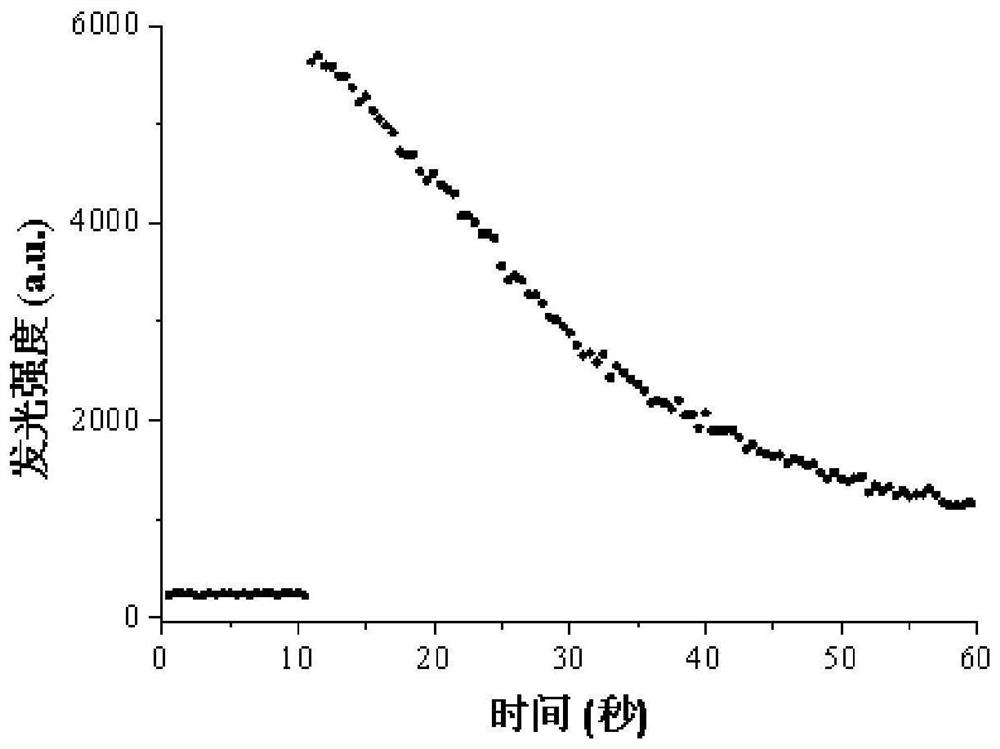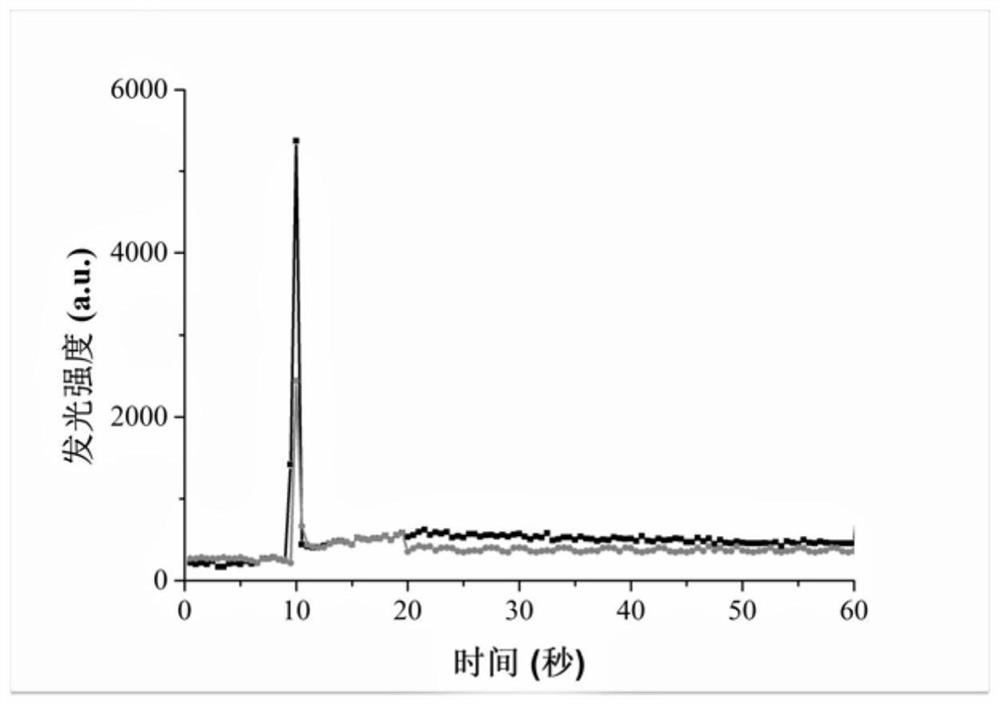Optical fiber biosensor and application thereof in homogeneous chemiluminescence biological detection
A homogeneous chemiluminescence and biosensor technology, applied in the field of biochemical analysis, can solve the problems of slow reaction rate, low concentration, hysteresis non-specific signal, etc., and achieve the effects of reduced interference, simple operation, and wide linear range
- Summary
- Abstract
- Description
- Claims
- Application Information
AI Technical Summary
Problems solved by technology
Method used
Image
Examples
Embodiment 1
[0059] Example 1 Verification of substrate concentration-controlled time resolution in fiber optic sensors
[0060] The biorecognition molecule immobilized on the fiber optic probe was procalcitonin capture antibody, and the chemiluminescence substrate was acridinium ester as an example to verify the substrate concentration-controlled homogeneous chemiluminescence fiber sensor.
[0061] Experiment 1) 10 μg / mL procalcitonin capture antibody and sufficient amount of chemiluminescent substrate acridinium ester-BSA (50 mg / mL) were modified onto the surface of the fiber core to form a fiber optic probe for detecting procalcitonin. Then, the fiber optic probe was reacted with procalcitonin standard substance (10 ng / mL) and HRP-labeled procalcitonin detection antibody to form a sandwich structure, and then a sufficient amount of trigger hydrogen peroxide was added to generate a chemiluminescence signal. Such as figure 1 To record the chemiluminescence kinetic curve. In this chemilu...
Embodiment 2
[0064] Embodiment 2 Construction of fiber optic biosensor
[0065] The main component of the core of the silica fiber is silica, and the biorecognition molecules are fixed on the fiber core through chemical bonds.
[0066] 1. Preparation of fiber optic biosensor
[0067] Taking the biorecognition molecule immobilized by the fiber optic biosensor as procalcitonin capture antibody, and the chemiluminescent substrate as acridinium ester as an example, the preparation process is described. The specific process is as follows:
[0068] 1) Cut the optical fiber into a small section of 6cm, and gently scrape off the acrylic protective layer with a length of 0.5cm at one end of the optical fiber with a knife;
[0069] 2) Corrode the part where the acrylic protective layer is removed with 24% hydrofluoric acid for 20 minutes to remove the silicon dioxide coating layer, rinse with 0.1mol / L NaOH and water three times, and blow dry with nitrogen;
[0070] 3) The fiber core part from whic...
Embodiment 3
[0083] The detection of procalcitonin in embodiment 3 blood
[0084] The principle of procalcitonin detection is as follows: firstly, the conjugate of chemiluminescent substrate acridinium ester and BSA and procalcitonin capture antibody are respectively modified on the optical fiber to prepare a chemiluminescent optical fiber biosensor for detecting procalcitonin. Then the sensor reacts with the test sample and HRP-labeled procalcitonin detection antibody, and an immune sandwich reaction occurs between the capture antibody, the test substance and the detection antibody on the sensor to form a complex, and the HRP in the complex and The concentration of the sample to be tested is related. Then a sufficient amount of trigger hydrogen peroxide is introduced, and the HRP bound on the sensor catalyzes hydrogen peroxide to produce an oxidative product, which immediately reacts with the acridinium ester modified on the optical fiber to generate a luminescent signal, and the intensit...
PUM
 Login to View More
Login to View More Abstract
Description
Claims
Application Information
 Login to View More
Login to View More - R&D
- Intellectual Property
- Life Sciences
- Materials
- Tech Scout
- Unparalleled Data Quality
- Higher Quality Content
- 60% Fewer Hallucinations
Browse by: Latest US Patents, China's latest patents, Technical Efficacy Thesaurus, Application Domain, Technology Topic, Popular Technical Reports.
© 2025 PatSnap. All rights reserved.Legal|Privacy policy|Modern Slavery Act Transparency Statement|Sitemap|About US| Contact US: help@patsnap.com



